Mystery of orca behaviour continues as Cruising Association pleads for data
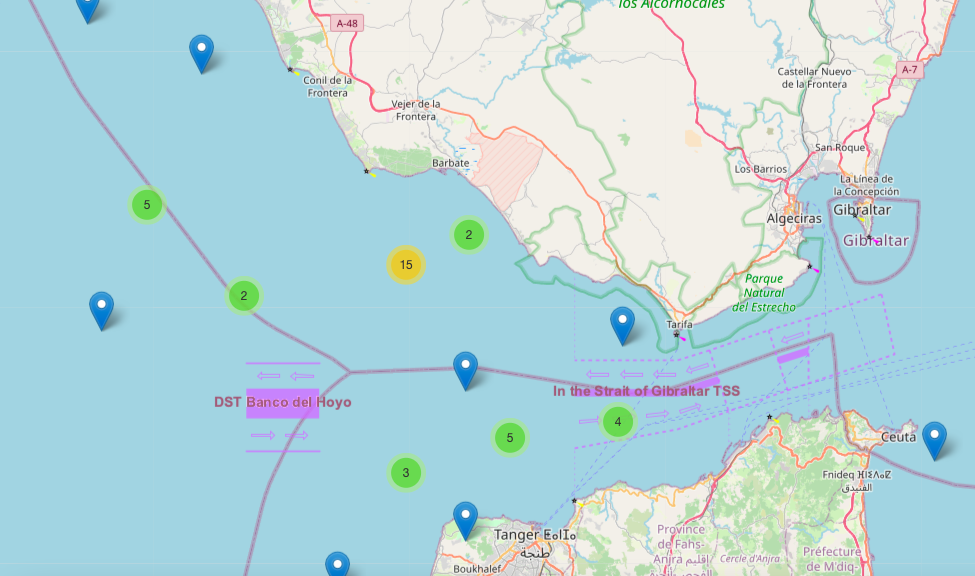
It’s been a year of numbers. Orca have sunk two boats, memberships to orca Facebook groups have rocketed past 50k, and the Cruising Association has seen a massive drop off in incidents being reported to its database (launched in June 2022) . . . even though the number of incidents doubled at the start of 2023.
“At the beginning of the year there were significantly more interactions [with orca compared to 2022] – more than twice as many to the start of July but we’re not sure how many interactions there have been since August,” says John Burbeck orca project team leader at the Cruising Association. That’s “because we’re no longer the getting the reports either to us or to Groupo Trabajo Orca Atlantica [GTOA marine biologists].
“There have been a number of social media groups launched and they are taking reports and sightings of interactions.
“The trouble is, the social media sites are transitory. In no time at all the critical bits of information are lost by the wealth of other inputs. The useful knowledge is lost. On our database the useful knowledge is there forever.”
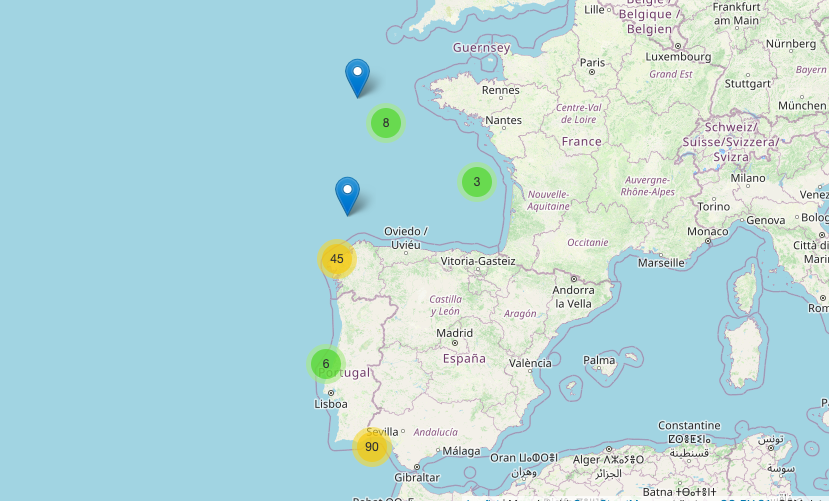
Burbeck’s currently focusing research on what’s the best course of action to limit damage when orca ‘interact’ with a vessel. He believes his organisation could have got an answer by now, but because of the significant increase in sites all demanding yachtsmens’ attention, the knowledge has become ‘distributed’.
That’s worrying the scientists who use the CA’s database – it was the only comprehensive one, says Burbeck. And while the CA and GTOA are trying to scrape data from social media sites, and GTOA scientists are trawling harbours, Burbeck points out that none of these routes provide the same level of detail as the CA is after.
“Unless all the information is available to be evaluated properly by scientists and sailors, then we’re unlikely to be able to find the best means of avoiding interactions and, if one starts, reducing the damage and ending it.
“The potential for missed evaluation and understanding is very real.
“We’re trying to evaluate whether motoring away, reversing, or just remaining stationary is the best tactic and we’re not getting enough data to be able to come up with some recommendations. So what we’re asking for is any encouragement for people to report next season [via the CA portal] so we can do this essential piece of research.” (Retro reports are welcome.)
In fairness, Orca Attack Reports (by far the largest of the Facebook groups with 61.5K members), clearly sets out instructions to use the CA’s reporting tool too. Other discussion forums include Orca Attack Iberia and Orcas Attacks Solutions.
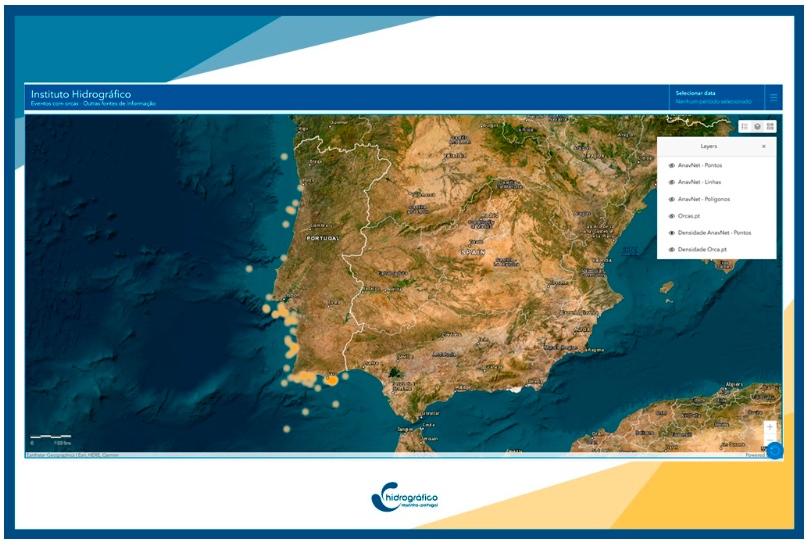
Meanwhile, the Portuguese Navy and Hydrographic Institute have entered the arena with another portal (pictured) which is designed to aggregate geospatial information relating to these events. It’s to ‘support navigators and contribute to navigation safety’. It says it brings together information from different sources in a single place, allowing, for example, access to contacts and security information, viewing the location and date of reported events, or reporting an event. However, on each occasion MIN has tried to access anything beyond the press statement, since launch on 7 December, it does nothing and goes nowhere.
“You now know as much as we do,” says Burbeck about the new site. “We only got to hear about it two days ago. We’re working with Portuguese marine biologist and trying to understand how that fits in.”
Black anti-fouling not to blame
Data previously collected by the CA has enabled scientists to theorise about what could be attracting the orca to boats off the Iberian coastline.
“The data has disproved a whole lot of possibilities,” says Burbeck.
“Anti-fouling colour or whether you use your echo sounder or not, these sorts of questions have been resolved. The answer’s ‘no, they don’t make a difference’.
“We know what’s attracting the orca to the boats is nothing to do with colour because they’re coming in from such a range. It might be sounds, but it’s certainly not the echo sounder. The variety of engines etc would suggest that it’s not that – so we don’t know why they’re doing it still. We are no clearer.”
Thus the team’s research was shifting to look at what to do in an attack – before the sources became so widely distributed. Burbeck says experts have different views, the data aimed to get clarification.
“Once the interaction starts, the advice has been stop the boat, because that calms them down. Then what? There are three options. One is to stay doing nothing because maybe you can’t do anything else – as big waves etc – that may be your only choice. Another option is to reverse – but you can only reverse under some circumstances. There’s evidence that if you reverse they lose interest and it minimises or reduces the damage. But then there’s a third option that’s being proposed – if the boat’s fast enough and you have a decent engine, you motor away towards shallow water as quickly as possible.
“The problem we’ve now got is, that from August 2023, we’ve got very incomplete data. We’ve got quite a lot less than GTOA but GTOA have not got a complete picture. We know that. We’re not able to resolve this ‘what to do if an interaction starts?’ question.”
Grazie Mamma sunk after orca interaction
On the afternoon of 31 October 2023, orca claimed a second boat this year, bringing the total since this current phenomenon began, to at least four. According to a translated Facebook post by the crew of Grazie Mamma (owned by the Polish cruise company Morskie Mile), a ‘herd’ of orca caused major damage after a 45 minute sustained attack, hitting the rudder with the damage eventually causing the boat to fill with water.
In response, the captain, crew members, search and rescue personnel, port tugboats and the Moroccan Navy worked together to try to bring the damaged yacht safely into port at Tanger-Med. However, the ship sank near the port’s entrance.
Scientists say orca not attacking
In an open letter, published in August 2023, a group of scientists warned against using the word ‘attack’ with regard to the orca.
‘Despite the damage to vessels, we believe characterising the interactions as ‘attacks’ is misleading. While some parts of the vessels infrequently have teeth marks on them, the predominant damage to rudders and keels are due to strikes or rams with the head or body. The whales are not ripping the rudders apart, as they might if this were hunting behaviour. While the behaviour may be frightening (and costly) from a human perspective, from the whales’ perspective, it seems to be somehow gratifying.
‘We urge the media and public to avoid projecting narratives onto these animals. In the absence of further evidence, people should not assume they understand the animals’ motivations. The orca is an intelligent, socially complex species, and each population has its own culture—different vocalisations (known as dialects), prey preferences, hunting techniques, even different social structures and migratory behaviours.’
The letter says that severe damage has only occurred in 20 per cent of the interactions and warns against ‘a narrative—lacking a basis in science or reality—that the animals are aggressively attacking vessels or seeking revenge against mariners. We believe this narrative inappropriately projects human motivations onto these whales and we are concerned that perpetuating it will lead to punitive responses by mariners or managers. The whales have shown a wide range of behaviours during the interactions, many of them consistent with playful social behaviour.’
Burbeck agrees that it appears to be play.
“The descriptions of the behaviour continue to vary between one: coming in with one or two very heavy blows to the rudder and clearing off, and two: them spending 90 minutes maybe even more,” he says. “One crew reported orca played with the rudder for about twenty minutes, swam away, came back and played for twenty minutes, swam away and then came back again. There’re stories of them pushing the boats at speed, spinning them round, so the actual behaviour is the same as the year before and the year before that . . . in that it [behaviour] varies dramatically from interaction to interaction. So there’s no change. And we haven’t really got any more hard data out of the evidence about what attracts them.
“The definite data says in order to avoid an interaction the boat’s got to be in shallow water – less than 20 metres – and close to shore, less that two miles off. Or, a long way off, in very deep water, many miles off. Anything else and you’re at risk.”


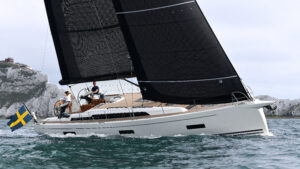
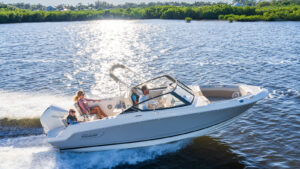








I wonder whether ultrasonic antifoul may be responsible for attrading orca? It may be beneficial to add a question on the orca reporting form to determine whether the vessel has ultra ultrasonic antifoul system installed.